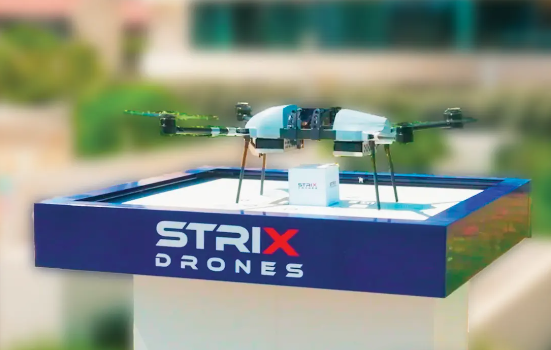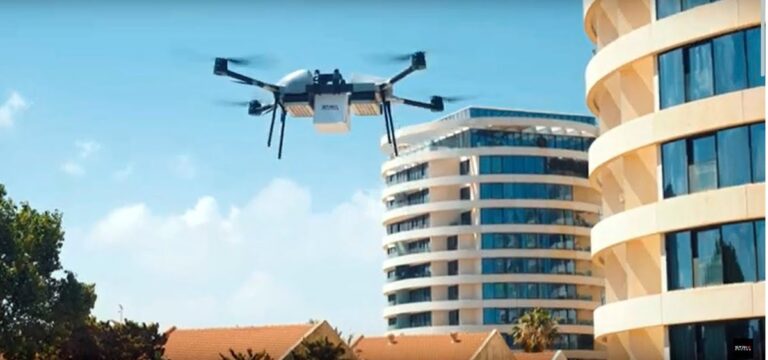Drone delivery is quickly becoming a game-changer in the logistics world. You’ve probably heard about companies like Amazon and Walmart experimenting with drones to get packages to your doorstep faster. But what makes drones so special for delivery? In this article, we’ll dive into the key benefits of using drones, such as increased efficiency, cost savings, and reduced environmental impact. We’ll also look at how drones can reach remote areas and discuss some challenges that come with this technology. By the end, you’ll understand why drones are the future of delivery services.
How Do Drones Increase Delivery Efficiency?
Drones are changing the game when it comes to delivery efficiency. Unlike traditional delivery methods that rely on ground vehicles, drones can take to the skies, bypassing traffic and other obstacles that slow down deliveries. This ability to fly directly to their destination means drones can deliver packages faster and more reliably.
One of the key ways drones boost efficiency is through their autonomous operation. Drones can be programmed to follow precise routes, ensuring timely deliveries without the need for breaks or shifts. This continuous operation means that drones can work around the clock, something human drivers simply can’t do.
Moreover, drones are particularly effective for last-mile deliveries—the final leg of the delivery process, which is often the most time-consuming and costly. By handling this critical part of the delivery chain, drones can significantly reduce delivery times and improve overall logistics efficiency. They can quickly navigate through urban environments or rural areas, delivering packages directly to customers’ doors.

In warehouses, drones also enhance efficiency by assisting with inventory management. They can quickly scan and track items, helping to streamline operations and reduce the time it takes to locate and dispatch goods. All these factors combined make drones a powerful tool for increasing delivery efficiency.
What Cost Savings Do Drones Offer in Delivery?
When it comes to cost savings, drones offer a variety of benefits that can significantly reduce expenses in delivery operations. Firstly, drones eliminate the need for human delivery drivers, which means you can save on labor costs. Unlike traditional delivery methods, drones operate autonomously, around the clock, without breaks or shifts. This leads to more efficient use of resources and lower operational costs.
Additionally, drones consume less energy compared to traditional delivery vehicles. Electric drones, in particular, offer substantial savings on fuel costs. They are much cheaper to charge and maintain than fueling and servicing a fleet of trucks or vans. The lower energy consumption also translates to reduced costs in the long run, especially as fuel prices continue to fluctuate.
Another factor to consider is the reduction in infrastructure costs. Drones do not require the same level of investment in road infrastructure and maintenance. They can bypass traffic congestion and use direct routes, reducing wear and tear on public roads and the associated maintenance costs.
Overall, incorporating drones into your delivery system can lead to significant cost savings, making it a smart choice for businesses looking to optimize their logistics and reduce expenses.
How Do Drones Reduce Environmental Impact?
Drones are making a significant difference in reducing the environmental impact of deliveries. One of the main benefits is their ability to cut down on emissions. Traditional delivery vehicles, like trucks and vans, rely heavily on fossil fuels, which contribute to air pollution and greenhouse gas emissions. In contrast, drones are typically powered by electricity, which can be sourced from renewable energy.
Another advantage is the reduction of traffic congestion. When drones take to the skies, they help alleviate the number of delivery vehicles on the road. This not only leads to fewer emissions but also reduces the wear and tear on infrastructure like roads and bridges.
Drones also optimize delivery routes. With their ability to fly directly to their destination, they avoid the delays and detours that ground vehicles often face. This efficiency means less energy is used per delivery, making each drop-off more environmentally friendly.
Furthermore, drone delivery can support sustainability goals by integrating with smart city initiatives. These cities aim to use advanced technology to improve urban living, and drones fit perfectly into this vision by providing a cleaner, faster, and more efficient delivery method.
In summary, by cutting down on emissions, reducing traffic congestion, and optimizing delivery routes, drones offer a greener alternative to traditional delivery methods.
How Can Drones Improve Accessibility in Remote Areas?
Drones are game-changers when it comes to reaching remote areas. Traditional delivery methods often struggle with inaccessible roads, rough terrain, or simply the long distances involved. Drones, however, can fly over these obstacles with ease, making them ideal for delivering goods to places that are hard to reach.
Imagine living in a remote village where getting essential supplies like medicine or food could take days. With drones, these items can be delivered in a matter of hours. This speed is particularly crucial in emergencies, where every minute counts. For instance, medical supplies can reach isolated clinics quickly, potentially saving lives.
Moreover, drones do not require the extensive infrastructure that ground vehicles do. There’s no need for paved roads or bridges. All that’s needed is a small landing area. This makes drones especially useful in disaster-stricken areas where infrastructure might be damaged or non-existent.
In Israel, the potential for drones to improve accessibility is significant, especially in the Negev and Galilee regions, where some communities are quite isolated. By integrating drones into the delivery network, these areas can enjoy the same level of service as urban centers, ensuring that everyone has access to essential goods and services.
What Are the Potential Challenges of Drone Delivery?
While drone delivery offers many benefits, it also comes with challenges. Privacy concerns are significant, as drones often use cameras and GPS, raising issues about data security. Regulatory hurdles are another obstacle, with strict rules governing drone operations. Weather conditions can impact drone flights, making them less reliable in bad weather. Additionally, the initial cost of drones and the infrastructure needed for their operation can be high. Lastly, public acceptance is mixed, with some people uncomfortable with drones flying overhead. Addressing these challenges is crucial for the widespread adoption of drone delivery.
Summary
Drone delivery offers numerous benefits, including increased efficiency, cost savings, and reduced environmental impact. They also provide better accessibility to remote areas. While challenges exist, such as regulatory hurdles and public acceptance, the advantages make drones a promising solution for modern delivery needs.





